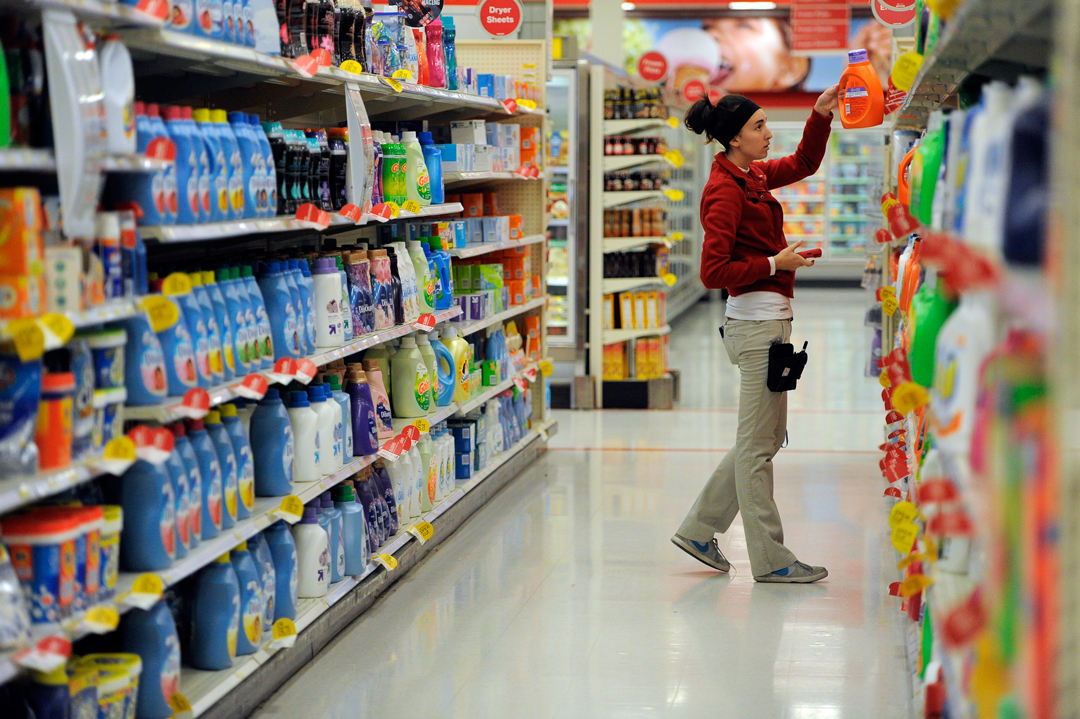
The (Surprising) Reality of Your Household Products
How old are your personal care and household cleaning products?
I’ll admit that until I had children, I wasn’t all that concerned with what personal care and household products I was using or where they came from. I mean, I should have been. After all, I worked in Supply Chain, specifically consumer packaged goods, and had access to more ingredient knowledge than the average consumer.
Naturally, when I had children the importance of better understanding and focusing on the ingredients of those products changed; what is in my toothpaste and all of those bottles of cleaning products under my kitchen sink…where are they made…and how long ago? I only wanted the very best for my babies!
With many well-known U.S. manufacturers closing their corporate headquarters and manufacturing facilities and moving them to Asia, have you thought about how and where your products are manufactured? How do they get to the store shelves? As I dug into it myself, I was shocked at what I discovered. Let me paint that picture for you…
The Consumer Product Journey: How The Supply Chain Works
Huge manufacturers are running multiple production lines all throughout Asia, manufacturing to what we refer to in the industry as a “Sail Date.” The Sail Date is the date a cargo ship leaves port to begin its long journey to the U.S., hence the term “boat-load from China.”
Manufacturers don’t want to miss their selected cargo ship, so products are usually complete one to two weeks prior to the Sail Date. Once the products are loaded onto the cargo ship, their transport can take from two weeks to one month. Upon arrival, all products must then be cleared through customs, which can take another three days to three weeks. Products are then typically loaded on to trucks or rail cars for transport to multiple warehouses throughout the U.S.
The length of time products spend in a warehouse can be one of the biggest variables; I have seen anything from one month to two years (yes, YEARS!), and sometimes products never even make it to a store but instead are delivered straight to Grocery liquidators. From a warehouse, products will usually go to a distribution center for specific retailers and then finally, they make it to the shelves in your local store.
Best case scenario – products manufactured overseas are usually 4 months old, but realistically, they’re more like 12-18 months old before you they make it to the store for you to purchase them.
Reduced Cost, Reduced Reliability
Let’s think about toothpaste—some of you may be surprised to know that toothpaste does have a shelf life. The ADA now requires any toothpaste containing fluoride to carry an expiration date. Typically, that date is two to three years after the manufacture date. Now, while using expired toothpaste may not be as bad as, say, drinking expired milk, it is probably best not to use it past the expiration date, and here’s why:
The fluoride in the toothpaste becomes less effective, as it doesn’t bind well to tooth enamel and thus, loses its ability to repel the bacteria in the mouth that causes cavities. Further, the ingredients start to separate (such as the flavoring), so toothpaste becomes quite unpleasant to your taste buds. And sometimes, toothpaste just becomes too dried out and hard to squeeze through the tube.
Here is one of the biggest shockers for you – Laundry Soap! Shelf life of liquid laundry soap should be 6 months to 1 year, but because of the supply-chain process many manufacturers are forced to use now, it’s nearly impossible to get in a consumers household before its effectiveness has already started to diminish.
Although laundry soap doesn’t technically expire, beyond 12 months, it definitely begins to lose its effectiveness in cleaning clothes. Some liquid laundry detergents have a “best used by” date on the bottle. After this date, the manufacturer cannot ensure that the formula won’t begin to break down and the ingredients separate. This separation is often caused by drastic changes in temperature – excessive heat or if the laundry detergent is allowed to freeze. While you can still use the product (i.e. it’s not harmful), you may find that your clothes aren’t as clean or fresh as they should be.
Aside from the overseas shipping timeframe resulting in diminished effectiveness of many products, there have been so many reports of defective and dangerous products coming from China – ranging from food products, cleaners and even toothpaste. As an example, in June 2007, U.S. consumers were advised to discard all toothpaste made in China after federal health officials discovered several products containing diethylene glycol (“DEG”), described as “a sweet, syrupy poison.” The FDA identified a brand called ShiR Fresh Mint Fluoride Paste and several other toothpaste brands containing dangerous amounts of the poisonous chemical. (source)
That occurrences such as this happen on a fairly regular basis shouldn’t surprise us. As intelligent consumers, we know that the main reason large U.S. corporations have moved their manufacturing operations overseas to places like China is to reduce costs. What we may not often think about is that those lower costs result not only from cheaper labor, but also from less regulation. And naturally, less regulation often results in toxic ingredients making their way into products we consume every day, assuming that those products from a U.S. company must be safe. Even for those consumers who’ve made a conscious effort to “buy American” and avoid products manufactured in places like China, removing those suspect products entirely from one’s home can be extremely difficult (because sometimes it seems like everything is “made in China!”). We just need to be conscientious about checking the labels on foods and merchandise to see where it came from to protect ourselves and our loved ones.
[sexy_author_bio]



Post a comment:
You must be logged in to post a comment.